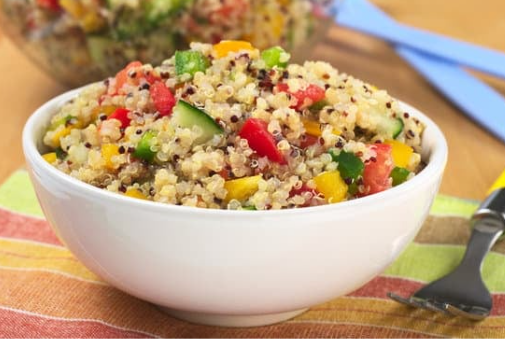
Have you noticed your grocery total creeping up even when your cart feels half full? You're not alone. With inflation still impacting food prices and more households watching every dollar, it’s easy to feel like eating healthy is a luxury. But with a few modern strategies and smart habits, you can still eat well, without draining your wallet.
Here are 15 ways to save money while sticking to your healthy eating goals:
1. Don’t shop hungry.
Shopping while hungry can lead to impulse buys and unnecessary snacks in your cart. If you can’t eat a full meal beforehand, bring a protein-rich snack like a boiled egg, protein bar, or handful of nuts to curb cravings while you shop.
2. Plan your meals—and your list.
Meal planning is more important than ever. Planning out your week saves time, prevents food waste, and helps avoid midweek takeout splurges. Use free apps like Mealime or Paprika to build a shopping list directly from your recipes.
3. Buy store brands.
Generic brands today are high-quality and often come from the same manufacturers as name brands. Compare ingredient labels—then enjoy the savings. Most retailers now offer organic store-brand options, too.
4. Shop without distractions.
Shopping alone—or at least without hungry kids or distracted partners—helps you stick to your plan. You’ll move more efficiently, price compare more easily, and avoid requests for pricey extras.
5. Use your phone’s calculator.
Prices aren’t always what they seem. Unit pricing (cost per ounce, pound, etc.) is your best friend for comparing value. Do the math—or let apps like Flipp and Basket help you scan for better deals locally.
6. Make smart swaps.
Replacing pricey staples with budget-friendly alternatives can add up fast. Try oats instead of boxed cereal, popcorn instead of chips, or lentils instead of ground beef for taco night. Same satisfaction, more savings.
7. Buy whole foods.
The more processing a product goes through, the more it costs. A block of cheese costs less than shredded. Whole carrots beat baby-cut. Buy ingredients you can prep yourself when time allows.
8. Buy in bulk—strategically.
Bulk bins and warehouse stores like Costco or Sam’s Club can save you money on staples like grains, beans, nuts, and spices. Just make sure you’re buying things you’ll actually use—and have space to store.
9. Stick to the store perimeter.
Fresh produce, proteins, dairy, and whole foods live on the outer edges of the store. The middle aisles are often filled with high-priced processed foods. When you do venture in, look at high or low shelves for better prices.
10. Go meatless once a week.
Meat is one of the most expensive items per pound. Plan one or two plant-based meals each week using beans, lentils, tofu, or eggs for protein. You’ll save money and boost your nutrition.
11. Use digital coupons and apps.
Forget scissors—today’s savings are digital. Use store loyalty apps, rebate tools like Ibotta or Fetch, and your favorite grocer’s app to get deals tailored to your shopping habits. Clip digital coupons before you shop.
12. Make your own treats.
Instead of splurging on bakery muffins or granola bars, try DIY versions at home. They're cheaper, customizable, and often healthier. Think banana oat muffins or no-bake energy bites.
13. Eat with the seasons.
Buying produce in-season costs less and tastes better. Strawberries in June, squash in October—check what's ripe locally and build your meals around that. Farmer’s markets and community co-ops are great seasonal sources.
14. Pack your own meals.
Meal prep isn’t just trendy—it’s cost-effective. Packing lunch and snacks from home can easily save $50–$100 a week. Invest in quality food containers and a small cooler bag to make it easy.
15. Grow what you can.
Even a windowsill herb garden can save you money on fresh herbs. If you have space, grow tomatoes, peppers, or leafy greens in containers or a small garden. Start with easy crops and build up from there.
Bottom Line
Saving money on groceries today isn’t just about clipping coupons. It’s about being intentional—planning, buying smart, and cooking more. These small changes not only protect your budget, but they also support better health in the long run. Stick with it, and the savings (and good habits) will grow.












